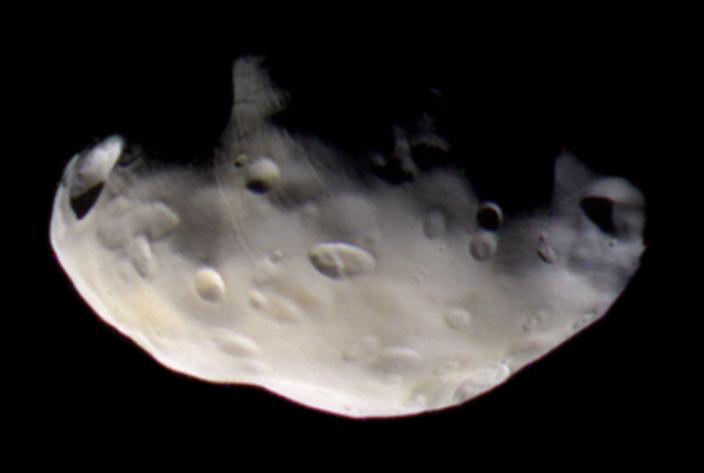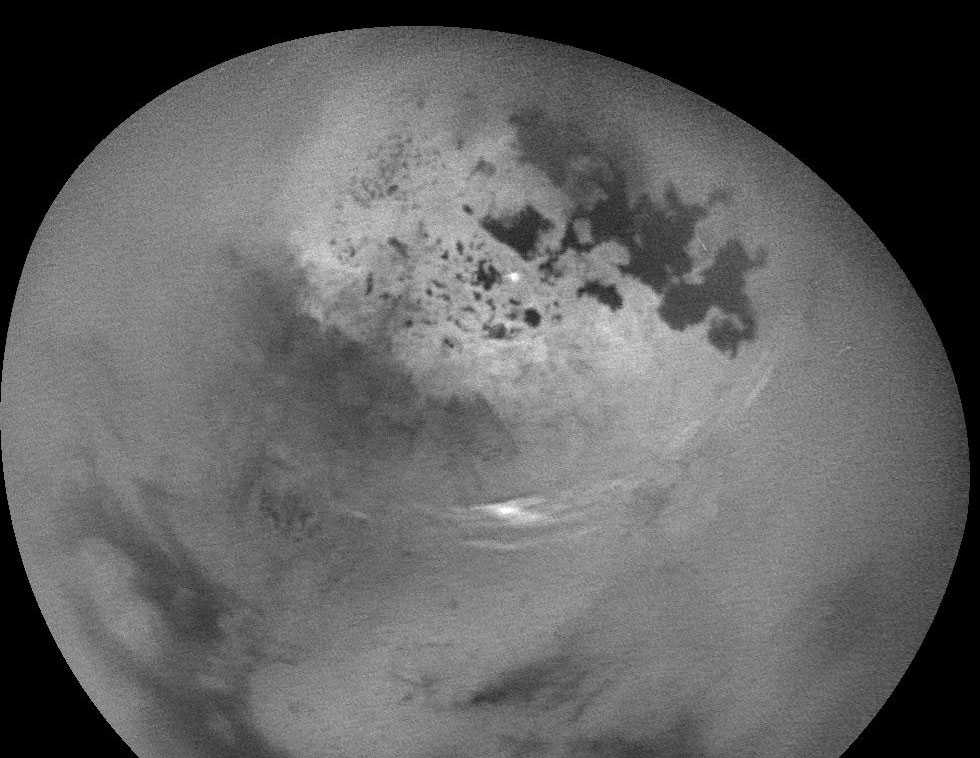NASA has released new photos of Saturn’s moon Pandora. The Cassini Mission took the images at an unprecedented distance.
The Cassini Mission collected the photos earlier this month when it was closer to Pandora than ever. The distance between the spacecraft and the natural satellite was only 25,000 miles (40,000 kilometers). These new set of images represents the most high-resolution pictures ever recollected of Pandora.

The spacecraft used the Imaging Science Subsystem (ISS) and the Visual and Infrared Mapping Spectrometer (VIMS). These two tools allow the probe to register any formation present in space with an immense quality, helping enormously investigations as they sustain more accurate information.
“This image from NASA’s Cassini Spacecraft is one of the highest-resolution views ever taken of Saturn’s moon Pandora. The spacecraft captured the image during its closest-ever flyby of Pandora on Dec. 18, 2016, during the third of its grazing passes by the outer edges of Saturn’s main rings,” NASA representatives wrote in the description of one of the images presented Friday.
About Pandora
The first recording of this moon took place back in 1980 when NASA’s Voyager 1 captured the first photos of the rock formation named “S/1980 S 26”. It was not until 1985 when it officially became “Pandora,” named that way after the mythological character.
This satellite is one of the 62 recorded Saturn’s moons and it is a relatively small one. The size of Pandora is about 25.3 miles or 40.7 kilometers, a radius notably smaller than, for example, Earth’s moon, which has a radius of 1,079 miles or 1,737.1 kilometers.

The orbit of Pandora has an 88,000 miles distance from Saturn as it rotates near the Saturn F ring. This translates into the moon orbiting Saturn entirely in a lapse of 15 hours.
Cassini’s final days: A successful mission
This spacecraft was launched in 1997 and arrived in Saturn system in 2004. Since its arrival, the mission has been in charge of recollecting vital information regarding Saturn and the formations near it.
During that space travel, the spacecraft was able to perform two gravitational assist flybys of Venus in the years 1998 and 1999. In that opportunity, the Cassini probe could go all the way through the Venus’ asteroid belt formation.

In those 12 years, the probe has been in Saturn and it has recollected some of the best photos of the planet and its several moons. This picture recollection has helped scientists on a better understanding regarding that system’s investigations.
Among Cassini’s accomplishments, there is the unveiling of Enceladus’ geysers mystery. Cassini’s data proved that the geysers in this moon were lowering in strength for about 40 percent. According to Cornell specialist Jonathan Lunine, that discovery is “conducive to life,” as it shows how this moon has a habitable interior.
After 251 orbits in Saturn system and two decades in space, this probe will destruct itself next year because of lack of fuel. Cassini will crash itself into Saturn’s surface to avoid any contamination to Enceladus moon, which is a possible source of life.
There are peculiar clouds above Titan’s surface
According to data registered by Cassini, there are unusual cloud formations above Titan’s surface. This moon is the biggest inner satellite of Saturn as its radius is about 2,576 kilometers large, almost half of Earth’s radius (6,300 kilometers).
Using the ISS and VMS technologies explained before, Cassini spacecraft was able to obtain images of the northern region of this huge moon. In this case, the VMS images were the ones that scientists used to analyze cloud behavior in Titan.

VMS allows the recording of colored pictures and showed the widespread cloud present in Titan. However, this cloud formation was not present in the ISS images at all.
This discrepancy concerned NASA officials mainly because the images were registered at almost the same time. For that reason, any kind of illumination or cloud movement that could explain the discrepancy was discarded automatically.
Despite the fact both imaging systems have different wavelengths, the investigation team was hoping to find any kind of cloud evidence in both systems.
“The answer to what could be causing the discrepancy [between the ISS and VIMS images] appears to lie with Titan’s hazy atmosphere, which is much easier to see through at the longer infrared wavelengths that VIMS is sensitive to (up to 5 microns) than at the shorter, near-infrared wavelength used by ISS to image Titan’s surface and lower atmosphere (0.94 microns),” NASA officials said in a statement released Thursday.
Obviating this particular mystery, this data recorded by Cassini will help the scientists team to understand the weather and climate changes present in Titan. NASA has said that Cassini has several months ahead to collect more images of that satellite’s cloud formations.
Source: Tech Times
